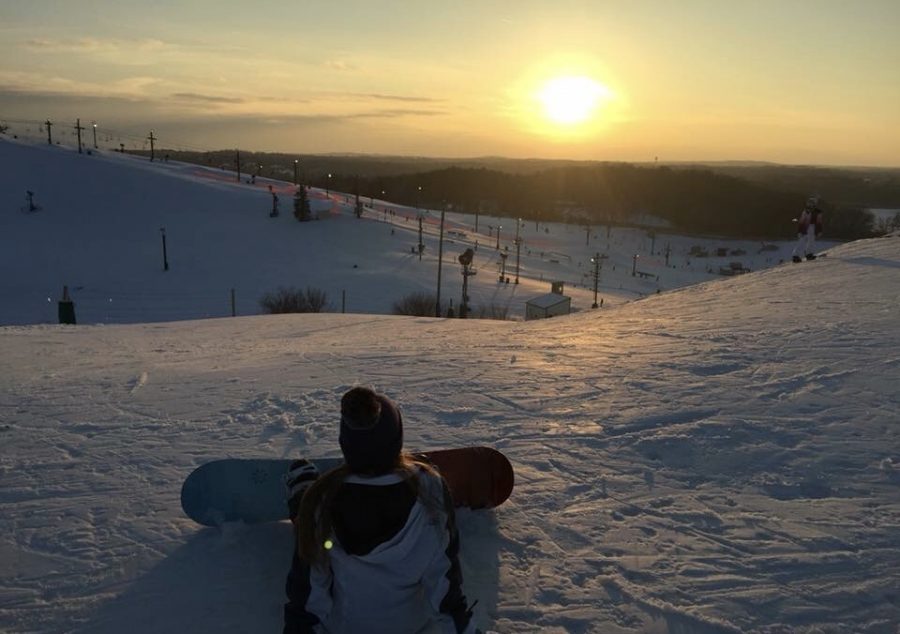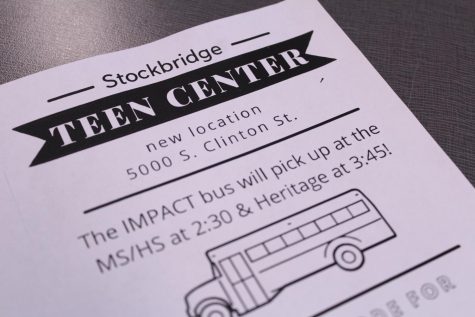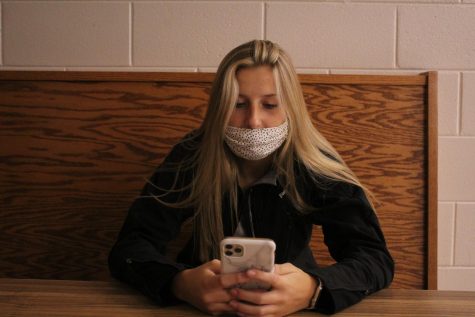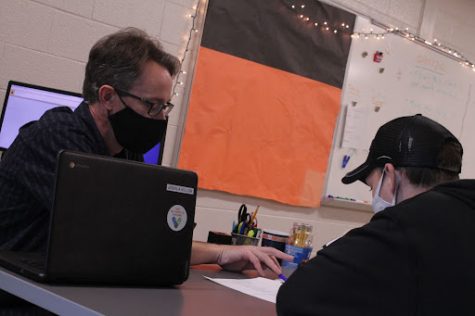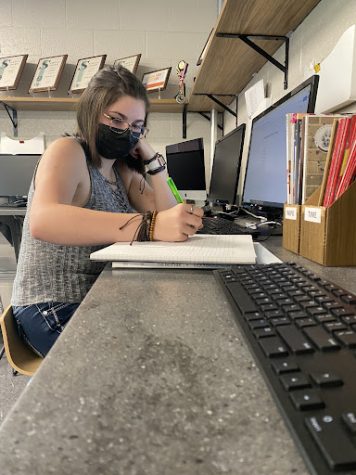Gliding past the fear of falling
Adjusting her snowboard bindings at the top of the Chicken Chute slope at Mt. Brighton, sophomore Rachel Owens takes in the view. “People should try it, even if they’re not good at it,” Owens said. “Once you can do it, it’s a lot of fun.”
Peeking over the long edge of her snowboard as she adjusts her bindings, sophomore Sam Argento realizes she is terrified. From the time she got on the scary ski lifts, all she can think about is whether she will be able to keep her balance on the way down the hill.
It is Argento’s first time hitting a slope bigger than a bunny hill at Boyne Mountain, and even though her nerves are getting to her, the beautiful scenery calms her down.
“I remember looking out, and you could see all the mountains,” Argento said. “It was just so beautiful. I was not stressed at all, it was just me and my board. I just had a bunch of confidence build up in me and I pushed away my fear because I was really afraid in the beginning. You go fast, and it’s hard to stop, and it’s ice and it hurts. I was just scared of getting hurt, but you have to get hurt in order to get better.”
Skiing and snowboarding enjoy an excellent safety record, and are less dangerous than other high-energy participation sports according to the National Ski Areas Association.
With the excellent safety measures taken at every park, one would expect an influx of eager snowboarders and skiers flocking to the slopes. And, the sport is on the rise, because according to Statistic Brain, more than 5.2 million people in the United States snowboarded in 2016, even while the United States population fell around 323.1 million.
Even though the safety records are excellent, like any other sport, learning how to ski or snowboard requires a bit of training.
“It’s not easy,” general manager of Mt. Brighton, Chris Sorensen, said. “I think a lot of people come to this sport and think, ‘I can just get out there and I’m gonna pick it up really easy.’ They watch the Olympics, and they watch the Burton U.S. Open or the X Games, and think, ‘Oh my gosh, this is going to be so easy, I waterski or I skateboard.’ Then, they go out and don’t have a really good experience for the first hour or two. They get frustrated, and they don’t want to do it anymore.”
Because of the frustration that every skier or snowboarder experiences at some point, new athletes should attend at least one lesson to relieve some of the anger.
“What you’ll gain in that hour or two hour lesson will really propel you and excel you at a much faster rate than if you try to do it on your own,” Sorensen said.
Taking a lesson with a profession can help build confidence in beginner skiers and snowboarders, and increase the probability of having fun.
“Rent skis, take a lesson and have a positive attitude,” Sorensen said. “One of the messages that we really try to push in our ski school is we want the kids to have fun and we want the kids to be safe. And yes, we’re going to teach them some stuff, but if they leave and they had a safe day and they had fun, they’re going to come back.”
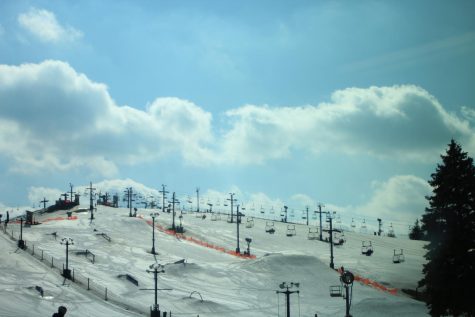
Mt. Brighton chairlifts. The resort is open Monday-Friday from 10 A.M. to 10 P.M. and Saturday-Sunday from 9 A.M. to 10 P.M.
Argento accompanied friend and sophomore Rachel Owens to Boyne Mountain this January for both of their first time snowboarding. Owens got the incentive to try the winter sport after she received a snowboard as a Christmas present.
“It was really hard at first,” Owens said. “Once you get the hang of it, it makes it fun and you feel free. It’s so much fun and stress relieving and anybody is capable.”
The freedom that both Argento and Owens mention became the reason why they both love the sport so much.
“This is my philosophy: No one ever wakes up in the morning and says, ‘I have to go skiing,’” Sorensen said. “They do it because they want to do it, and they want to have fun. So, I’m selling a product of fun. It’s like the best job in the world. I sell fun. Granted, sometimes we do miss expectations on some of our guests, and we try to recover them and handle those situations.”



